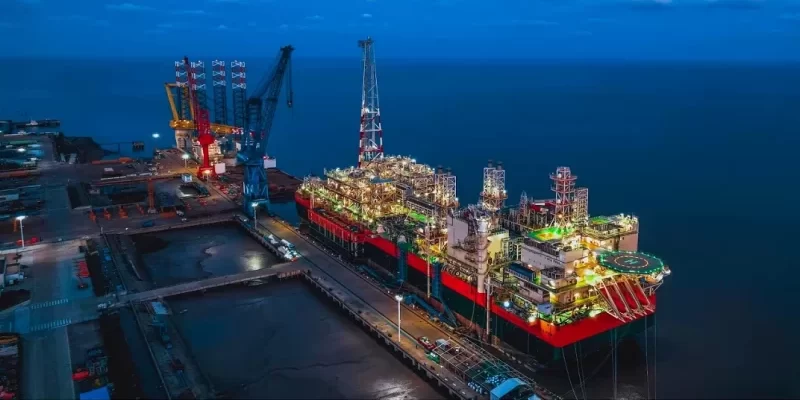Namibia’s promising offshore oil discoveries are facing a significant obstacle to full-scale development due to high levels of associated gas, according to global consultancy Wood Mackenzie.
Ian Thom, Research Director for Sub-Saharan Africa Upstream at Wood Mackenzie, discussed the challenges of developing Namibia’s offshore resources at a recent industry event.
While Namibia has gained significant attention as a key oil frontier in Africa, Thom cautioned that the complexity of developing these offshore fields could be greater than initially anticipated.
“Namibia is one of the most talked-about topics in Africa, and we receive more questions about it than almost any other region.
There’s no doubt that Namibia is hugely exciting. But from a development perspective, it does present more challenges,” Thom explained.
One major concern is the high gas content in offshore fields like the Venus discovery, operated by TotalEnergies.
Thom noted that the gas-to-oil ratio in Venus is much higher than in comparable deepwater projects, such as those in Guyana, potentially complicating the development process.
“If you look at the gas ratio in Venus compared to some of the projects ExxonMobil has developed in Guyana, Namibia has roughly double the gas content,” Thom pointed out.
In response to this challenge, TotalEnergies has initiated the environmental approval process for the Venus field, with plans to reinject the associated gas back into the reservoir through subsea wells, rather than transporting it to shore via a pipeline.
“The approach that TotalEnergies is taking in its current application is for gas reinjection, and I don’t see any mention of a gas pipeline to shore. That appears to be the current concept,” Thom said.
Although reinjection of gas is a common strategy in frontier deepwater projects—Guyana being a notable example—Thom warned that relying on this method over the long term could present difficulties, such as increased gas recycling and a rising gas-to-oil ratio.
“If you keep reinjecting gas, you can get gas recycling effects, leading to a continual increase in the gas-to-oil ratio. It may be that there’s a gas development five to ten years down the road,” he added.
The uncertainty surrounding gas handling is not limited to TotalEnergies. Galp, the operator of the Mopane discovery, has yet to announce a clear strategy for managing the associated gas from its field.
Thom also pointed out that Namibia’s reliance on imported electricity could make gas-to-power projects an appealing option.
However, he raised concerns about the scale and feasibility of such initiatives, questioning whether the gas generated would be enough to meet the demand and whether the market could absorb all the associated gas.
“What’s the magnitude of that? Can you deliver enough? Is the market able to absorb all the associated gas, or will some still need to be reinjected?” Thom asked.
Additionally, Thom highlighted the challenges of involving third-party players in midstream operations, noting the risks associated with complex partnerships and the coordination required with multiple counterparties.
Despite these hurdles, industry optimism for Namibia’s oil prospects remains strong, driven by discoveries such as Venus, Graff, and Mopane. However, the country’s deepwater locations, high gas content, and lack of infrastructure are likely to delay the development timeline.
“In Guyana, they reached their first Final Investment Decision (FID) within 25 months, but in Namibia, development is likely to take longer due to these added complexities,” Thom stated.
Nevertheless, Wood Mackenzie remains optimistic about Namibia’s oil future.
“The resources are certainly there, and at least a couple of projects look very promising for Floating Production Storage and Offloading (FPSO) development in the relatively near term. We’re continuing to watch Namibia very closely and remain actively engaged,” Thom concluded.
![]()




